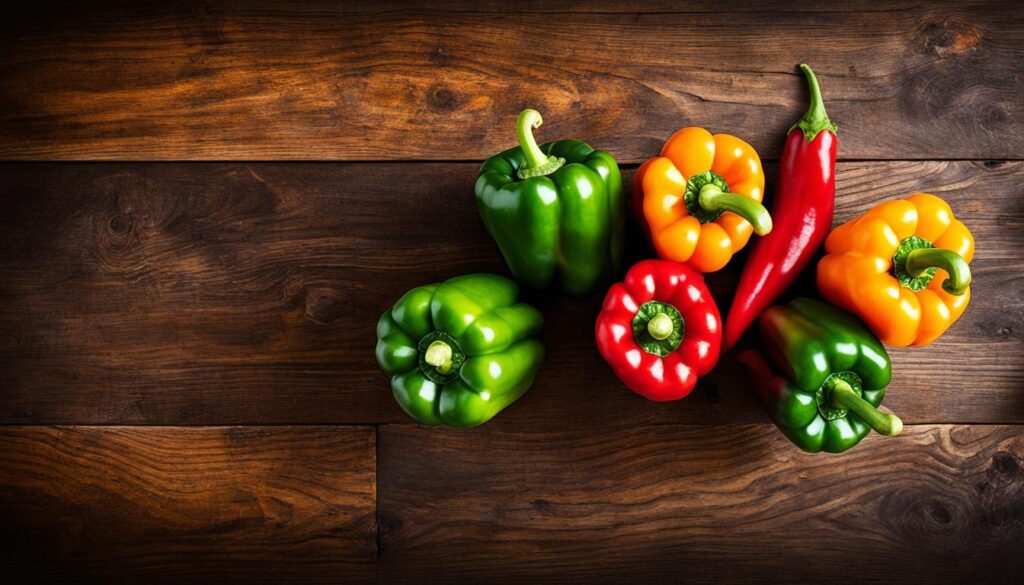If you’ve ever grown green peppers in your garden, you may have wondered if they eventually turn red. The answer is yes! Green peppers do undergo a remarkable color change as they ripen and mature.
When green peppers are harvested, they are still in their unripe stage. While they are perfectly edible in this state, they lack the full flavor and sweetness that comes with ripening. As time goes by and the peppers are exposed to sunlight, they gradually transition from green to other colors, including chocolate brown before finally turning red.
This natural color change is not exclusive to green peppers. In fact, yellow and orange bell peppers are varieties that have been specifically bred to exhibit these vibrant hues. Contrary to popular belief, the number of bumps on the bottom of a pepper does not indicate its gender or sweetness. These bumps, known as lobes, vary in size and shape, having no correlation with the taste or ripeness of the pepper.
It’s interesting to note that all bell peppers, regardless of their color, are technically fruits. They belong to the same family as tomatoes, as they develop from the ovaries of flowering plants. However, due to their mild and versatile flavor, they are often classified and used as vegetables in culinary contexts.
Nutritional and Taste Differences in Bell Peppers
When it comes to bell peppers, there are various varieties available, each with its own unique characteristics in terms of taste and nutrient content. Bell peppers come in a range of vibrant colors such as green, red, yellow, orange, and even purple. The color and ripeness of a bell pepper are determined by how long it stays on the plant.
Starting with green bell peppers, they are the least ripe and slightly bitter in taste compared to their more mature counterparts. As bell peppers ripen, their flavors become sweeter. In fact, red bell peppers are known for their delightful sweetness. So, if you prefer a milder flavor, opt for green bell peppers, whereas if you crave a sweeter taste, red bell peppers are the way to go.
Beyond taste, bell peppers also vary in their nutrient content. Green bell peppers, for example, contain lutein and zeaxanthin, which are essential for maintaining healthy eyesight. Yellow bell peppers, on the other hand, boast violaxanthin, an antioxidant known for its potential cancer-fighting properties. Red bell peppers, the sweetest of the bunch, are rich in capsanthin, another powerful antioxidant.
When it comes to vitamins and minerals, all bell peppers offer a nutritional punch. However, red bell peppers contain the highest amount of nutrients overall. They are a great source of lycopene, a potent antioxidant associated with heart health and reducing the risk of certain cancers. Additionally, red bell peppers are packed with Vitamin C, which supports immune function, and Vitamin A, which promotes healthy skin and vision.
So whether you’re looking for a slightly bitter crunch or a burst of sweetness, bell peppers offer a range of flavors to suit your taste buds. Not only that, but they also provide a variety of essential nutrients that contribute to a well-rounded diet. From their vibrant colors to their impressive nutrient content, bell peppers are undoubtedly a versatile and nutritious addition to any culinary repertoire.
The Science Behind Pepper Color Change
Pepper color change is an intriguing process driven by organic chemistry. Throughout the growing season, the green pigment known as chlorophyll dominates in peppers, thanks to photosynthesis. However, as the season progresses, chlorophyll begins to break down, allowing other pigments to emerge. These pigments, including yellows, oranges, and reds, create a vibrant visual display.
As the concentration of different compounds, such as lutein, violaxanthin, beta carotene, capsanthin, and capsorubin, increases, the peppers take on their distinct yellow, orange, or red hues. These compounds contribute not only to the colorful appearance of the peppers but also to their nutritional value and health benefits.
Pepper plants respond to changing environmental conditions, such as dropping temperatures, by producing more sugar. This natural response not only enhances the sweetness of the peppers but also acts as a protective mechanism against freezing. The increased sugar content helps to shield the cells from potential damage, ensuring the peppers maintain their delicious taste and quality.
Can Transplanting Raspberries Affect the Ripening of Green Peppers?
Transplanting raspberries timing guide is essential for successful transplantation. However, it will not affect the ripening of green peppers. The ripening process of peppers is influenced by factors such as temperature, water, and sunlight, rather than the neighboring plants. So feel free to transplant your raspberries without worrying about your green peppers.










